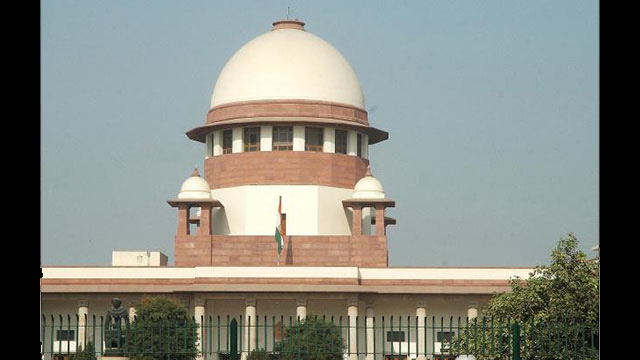Overcoming resistance from the judiciary, a Bill to scrap the collegium system of appointing judges to the Supreme Court and High Courts was introduced in the Rajya Sabha on last Thursday.
Overcoming resistance from the judiciary, a Bill to scrap the collegium system of appointing judges to the Supreme Court and High Courts was introduced in the Rajya Sabha on last Thursday. At present, judges of the SC as well as HCs are appointed by the collegium system. Here is all you would like to know about the old collegium system, the proposal for the new system and what it will do to judiciary.
What is the collegium system?
It is a system under which appointments and transfers of judges are decided by a forum of the Chief Justice of India and the four senior-most judges of the Supreme Court. It has no place in the Indian Constitution.
What does the Constitution actually prescribe?
Article 124 deals with the appointment of Supreme Court judges. It says the appointment should be made by the President after consultation with such judges of the High Courts and the Supreme Court as the President may deem necessary. The CJI is to be “consulted” in all appointments, except his or her own. Now, it is an established convention to make the senior most judge of the SC as CJI.
Article 217 deals with the appointment of High Court judges. It says a judge should be appointed by the President after consultation with the CJI and the Governor of the state. The Chief Justice of the High Court concerned too should be consulted.
Evolution of the collegium system (the three Judges cases)
The collegium system has its genesis in a series of three judgments that is now clubbed together as the “Three Judges Cases.”
The First Judges Case (S. P. Gupta v. Union of India December 30, 1981)
It declared that the “primacy” of the CJI’s recommendation to the President can be refused for “cogent reasons”. This brought a paradigm shift in favour of the executive having primacy over the judiciary in judicial appointments for the next 12 years.
The Second Judges Case (Supreme Court Advocates-on Record Association SCAORA v. Union of India October 6, 1993)
A nine-judge bench decision ushered in the collegium system. The majority verdict written by Justice J S Verma said “justiciability” and “primacy” required that the CJI be given the “primal” role in such appointments. The CJI should consult two other judges of the SC.
It is notable here that out of the 9 judges, Justice Verma spoke for only himself and four other judges. Justice Pandian and Justice Kuldip Singh went on to write individual judgments supporting the majority view. But Justice Ahmadi had dissented and Justice Punchhi took the view that the CJI need not restrict himself to just two judges (as mentioned in the ruling) and can consult any number of judges if he wants to, or none at all.
The Third Judges Case (In response to Presidential Reference 1 of 1998)
For the next five years after the second judges case, there was confusion on the roles of the CJI and the two judges in judicial appointments and transfers. In many cases, CJIs took unilateral decisions without consulting two colleagues. Besides, the President became only an approver.
In 1998, President K R Narayanan issued a presidential reference to the Supreme Court as to what the term “consultation” really means in Articles 124, 217 and 222 (transfer of HC judges) of the Constitution. The question was if the term “consultation” requires consultation with a number of judges in forming the CJI’s opinion, or whether the sole opinion of the CJI constituted the meaning of the articles. In reply, the Supreme Court laid down nine guidelines for the functioning of the Coram for appointments/transfers; this came to be the present form of the collegium.
Besides, a judgment dated October 28, 1998, written by Justice S P Bharucha at the head of the nine-judge bench, used the opportunity to strongly reinforce the concept of “primacy” of the highest judiciary over the executive. This was the “Third Judges Case”.
SC guidelines on appointments
What are the arguments against the collegium system?
· The administrative burden of appointing and transferring judges without a separate secretariat or intelligence-gathering mechanism dedicated to collection of and checking personal and professional backgrounds of prospective appointees;
· A closed-door affair without a formal and transparent system;
· The limitation of the collegium’s field of choice to the senior-most judges from the High Court for appointments to the Supreme Court, overlooking several talented junior judges and advocates.
What moves were taken to correct these?
The Law Commission in its 214th Report on ‘Proposal for Reconsideration of Judges cases I, II and III’ recommended two solutions:
· To seek a reconsideration of the three judgments before the Supreme Court
· A law to restore the primacy of the Chief Justice of India and the power of the executive to make appointments
What is the suggested alternative to the collegium?
A National Judicial Commission was envisaged as an alternative. The Constitution (98th Amendment) Bill was introduced in the Lok Sabha by the NDA government in 2003. It provided for the constitution of an NJC to be chaired by the CJI and with two of the senior-most judges of the Supreme Court as its members. The Union Law Minister would be a member along with an eminent citizen to be nominated by the President in consultation with the Prime Minister. The Commission would decide the appointment and transfer of judges and probe cases of misconduct by judges, including those from the highest judiciary.
The current debate
In April 2013, media reports indicated that the government was contemplating reform proposals regarding appointment of judges to the Supreme Court and the High Courts. A draft Bill by the Law Ministry then headed by Ashwani Kumar was to submit the Judicial Appointments Commission Bill to the Cabinet by April 22. This draft bill is not in the public domain yet.
Finally on August 22nd 2013, the union cabinet approved the Judicial Appointments Commission Bill to scrap the collegium system of appointing judges to the Supreme Court and high courts. The commission will be presided over by the Chief Justice of India, and will include two Supreme Court judges, the Law Minister, two eminent persons and the Justice Secretary, who will be the Member-Secretary. The Leader of the Opposition in either House will be part of a committee which nominates the eminent persons, the other members being the Prime Minister and the Chief Justice. Thus, all the organs of the State, as also the citizenry, will be represented.
Why are the lawyers opposed to this draft, and why the government seems to favour it? The govt, under the collegium system, lost the primacy it enjoyed after the first judges case.
However, the truth is that the judgments laid down a mandatory consultation process between the constitutional authorities, including the Central government which has inputs from various intelligence agencies. The complaint that the Central government is not consulted nor has any say in the matter is misleading and incorrect.
The government is upset because the executive does not now have the primacy it enjoyed earlier. The vigorous judicial scrutiny and oversight of executive misdemeanours in the 2G scam and Coalgate litigations (apart from many others) has rattled the executive.
The Judicial Appointments Commission is so structured as to revive the dominant voice of the political class by including the Law Minister, two eminent jurists nominated by the government and the Leader of the Opposition.
The new Commission will ensure the central issue of democratic accountability which the collegium system had subverted. It is completely undemocratic if the selection to such a powerful institution is to be left entirely to a body of men and women concededly learned in the law, but unelected, and in practice virtually irremovable, thanks to a complicated impeachment procedure.
-valuable inputs from Amulya Nidhi





